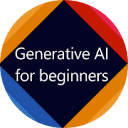As “artificial intelligence” evolves from a tech buzzword to a workplace necessity, more and more people find themselves stuck in a dilemma: wanting to learn
AI but fearing high barriers—worries about needing complex programming skills, intimidation by obscure mathematical formulas, and hesitation over the cost-effectiveness of paid courses. However,
Elements of AI, a free course co-developed by the University of Helsinki (Finland) and MinnaLearn, has become the top choice for over 1 million learners across 170+ countries, thanks to its “zero-barrier, fully free, and highly recognized” traits. As a course integrated into Finland’s national digital literacy strategy, what kind of learning value does it hold? Drawing on course details and real-world cases, this article unpacks the core logic behind its status as a global benchmark.
I. Course Origin: AI Popularization Practice Under Finland’s Educational Philosophy
The birth of Elements of AI stems from Finland’s strategic focus on “national AI literacy.” Launched in 2018 by the University of Helsinki in collaboration with a tech enterprise, the course was never intended to train professional engineers. Instead, its goal is to bridge the public’s cognitive gap in AI—enabling people of all ages and professional backgrounds to understand AI’s basic principles and social impacts. This “educational equity” philosophy runs through every aspect of the course: no tuition fees, no prior programming or math skills required, and support for 26 languages (including Chinese), truly realizing “borderless AI education.”
As of 2025, 40% of the course’s global learners are women, and a large number of professionals over 45 have used it to kickstart their AI skill development—testament to its “for everyone” design. A survey by an education institution revealed that in the “Best AI Introductory Courses for Beginners” ranking, Elements of AI received a 78% recommendation rate, far surpassing similar paid courses and becoming the top choice for both educators and professionals.
II. Course Structure: A Two-Stage Approach to Building a Comprehensive AI Knowledge System
The course adopts a dual-module design of “theoretical introduction + practical advancement,” with a total learning time of approximately 30 hours. Learners can adjust their pace independently, making it ideal for fitting into fragmented schedules.
1. Foundational Module: “Introduction to Artificial Intelligence” – Understanding AI’s Underlying Logic
This stage focuses on “cognitive enlightenment,” breaking down core concepts using everyday examples: supervised learning is explained through “how AI filters spam emails,” and unsupervised learning is illustrated via “e-commerce recommendation algorithms,” avoiding the jargon overload common in traditional textbooks. Each chapter includes interactive quizzes and discussion questions—such as “What biases might AI have when evaluating loan eligibility?”—guiding learners to extend their thinking from technical aspects to social implications.
The highlight lies in its “non-technical expression”: when explaining neural networks, it uses “human brain neuron connections” as an analogy; when clarifying the importance of data, it analyzes “the reasons behind AI prediction model failures during the pandemic”—making complex concepts accessible even to liberal arts majors. A high school that integrated this module into its AI elective found that after 12 weeks, 83% of students could accurately distinguish between “machine learning” and “deep learning.”
2. Advanced Module: “Building AI” – Taking the First Step in Practice
After completing the foundational module, learners can move on to the advanced content, which introduces practical operations for the first time. Basic Python programming is covered, but the goal is not to train independent model development skills. Instead, “modular tasks” allow learners to experience the AI project workflow: for example, implementing image classification with simple code or designing basic prediction spreadsheets.
The core of this stage is “cultivating engineering thinking” rather than coding skills. An internet operations professional shared: “I had no programming experience, but I could still complete the exercises. The course provides code templates and focuses on teaching ‘why this design works’—this mindset has been incredibly helpful for optimizing data reports in my work.”
III. Core Advantages: Three Traits That Break Down AI Learning Barriers
Among similar free courses, Elements of AI stands out due to three irreplaceable advantages:
1. Zero-Barrier Accessibility: Truly “Learnable by Everyone”
The course completely shatters the myth that “AI is only for programmers”: no prior math knowledge is required—data labeling is compared to “sorting a shopping list,” and algorithm principles are explained using “voting decisions”; it supports Chinese interfaces and subtitles, with plain-language explanations for professional terms, making it accessible even to those with only a high school English level. Ms. Li, a 62-year-old retired teacher, commented: “I used to think AI was irrelevant to me, but through this course, I can now understand the basic logic of autonomous driving and even discuss AI ethics with my grandson.”
2. Content Authority: University Endorsement + Practical Orientation
As an official course of the University of Helsinki, its content undergoes academic rigor checks, while collaboration with enterprises ensures practical relevance: it covers classic theories like the “Turing Test” and cutting-edge topics such as “AI misdiagnosis risks in healthcare” and “preventing algorithmic discrimination.” Unlike purely theoretical courses, each chapter includes real cases—for example, analyzing “how Finnish traffic AI optimizes traffic lights” and explaining “the workflow of customer service chatbots”—grounding knowledge in real-life scenarios.
3. High-Value Certification: Free Yet Recognized in the Workplace
Learners who complete 90% of the course content and achieve a 50% pass rate on quizzes receive a free electronic completion certificate. While not a professional qualification, this certificate adds value to job applications—a recruitment platform’s data shows that job seekers who mention “Elements of AI completion” on their resumes are 32% more likely to get interviews for AI-related positions. An HR manager at a tech company noted: “This certificate proves a candidate’s initiative to learn about AI, making it a strong indicator of literacy for non-technical roles like operations and product management.”
IV. Learning Value: From Cognitive Upgrade to Career Empowerment
The value of Elements of AI extends far beyond “knowledge popularization—it has become a growth tool for diverse groups:
1. Professionals: Low-Cost Skill Enhancement
For non-technical professionals, the course is a “fast track to AI literacy.” Xiao Wang, a marketing specialist, developed basic data thinking through the course and optimized promotion strategies using a “user behavior classification model,” increasing conversion rates by 20%; Ms. Zhang, an HR professional, used AI ethics knowledge to design fairer resume screening criteria, reducing talent loss caused by algorithmic biases. Cases show that some professionals who added the certificate to their LinkedIn profiles saw a 40% increase in recruiter contacts, with some even achieving a 30% salary raise.
2. Educators: Building Lightweight AI Teaching Programs
Many primary/secondary schools and universities have integrated the course into their curricula. An IT teacher at a high school split the course into a 12-week elective, assigning 1-2 chapters of learning per week. Class time focused on discussions and extensions, and students completed “AI life application” projects at the end of the semester—some designed waste classification recognition models, while others researched ancient poetry generation algorithms. This not only saved textbook development costs but also sparked students’ interest. Universities often use it as supplementary material for general education courses to help liberal arts students build tech literacy.
3. Enthusiasts: Establishing a Systematic Cognitive Framework
For the general public interested in AI, the course helps avoid the pitfalls of “fragmented learning.” It forms a complete loop from “what is AI” to “future risks of AI,” with supplementary resources (such as academic paper links and industry reports) guiding in-depth exploration. A learner reviewed: “It’s more useful than reading 10 popular science articles—now I can clearly tell the difference between AI gimmicks and real technological breakthroughs.”
V. Learning Guide: Tips for Avoiding Pitfalls and Advancement Paths
1. Efficient Learning Suggestions
- Plan Your Time Wisely: Devote 30 minutes daily to complete the foundational module in 6-8 weeks—avoid “cramming,” which leads to quick forgetting;
- Prioritize Interactive Exercises: Chapter quizzes are not just assessments but tools for organizing knowledge—screenshot wrong answers to create study notes;
- Leverage the Discussion Forum: Global learners share practical cases—Chinese users should focus on “localized application” topics.
2. Pitfall Avoidance Reminders
- Clarify the Course’s Positioning: It focuses on basic cognition—those aiming to become AI engineers need follow-up studies in programming and math (e.g., advanced courses like fast.ai);
- Stay Disciplined: No mandatory progress requirements—join study communities or form study groups to avoid abandoning the course halfway;
- Extend Practice: After completion, try tools like Teachable Machine to work on small projects and turn theory into practical experience.
3. Advancement Directions
- Programming Foundations: Learn introductory Python courses (e.g., free tutorials on Codecademy);
- Technical Deepening: Take courses like Coursera’s “AI for Everyone” or Fast.ai’s deep learning programs;
- Domain-Specific Applications: For fields like healthcare or finance, explore industry-specific AI case libraries (e.g., vertical datasets on Kaggle).
Conclusion: A “Basic Literacy Must-Course” for the AI Era
The success of Elements of AI is essentially a victory for Finland’s educational philosophy—it proves that high-quality AI education should not be a luxury reserved for paid courses, nor blocked by technical barriers. For 2025’s learners, this free course is both an “AI literacy tool” and a “key to cognitive upgrading”: it helps us understand the underlying logic of the tech wave, learn to analyze problems with AI thinking, and gain an edge in career competition.
As the course opens with: “Understanding AI is not about becoming a technical expert, but about maintaining the initiative to think in an increasingly AI-driven society.” Starting with this course, you may find that AI has never been more accessible.









